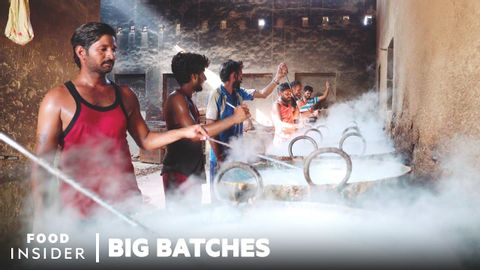在印度,每天有700公斤的傳說中的Gulab Halwa是如何手工製作的? (How 700 Kg Of Legendary Gulab Halwa Is Handmade Every Day In India | Big Batches | Food Insider)
 沒有此條件下的單字
沒有此條件下的單字US /ɪˈvɛntʃuəli/
・
UK /ɪˈventʃuəli/
US /ˌɪndəˈvɪdʒuəl/
・
UK /ˌɪndɪˈvɪdʒuəl/
- n. (c.)個人;單個項目;個體;個人賽
- adj.個人的;獨特的;個別的;獨特的
US /ˈprɑsˌɛs, ˈproˌsɛs/
・
UK /prə'ses/
- v.t.用電腦處理(資料);(依照規定程序)處理;處理;流程;加工;理解
- n. (c./u.)(規定的)程序;過程;進程;方法;法律程序;進程
US /ˈdɛdɪˌketɪd/
・
UK /'dedɪkeɪtɪd/
- v.t.專用;專心的 ; 專注的;奉獻
- adj.盡心盡力的,專注的;專用的
